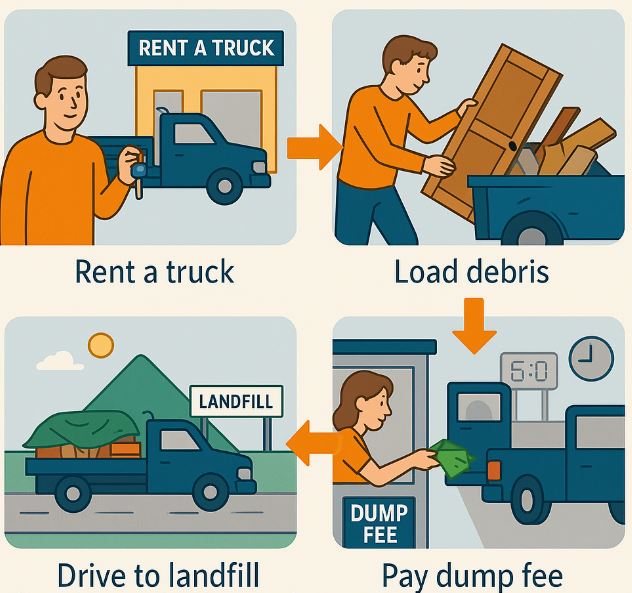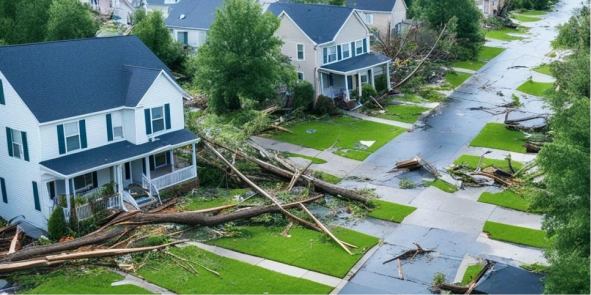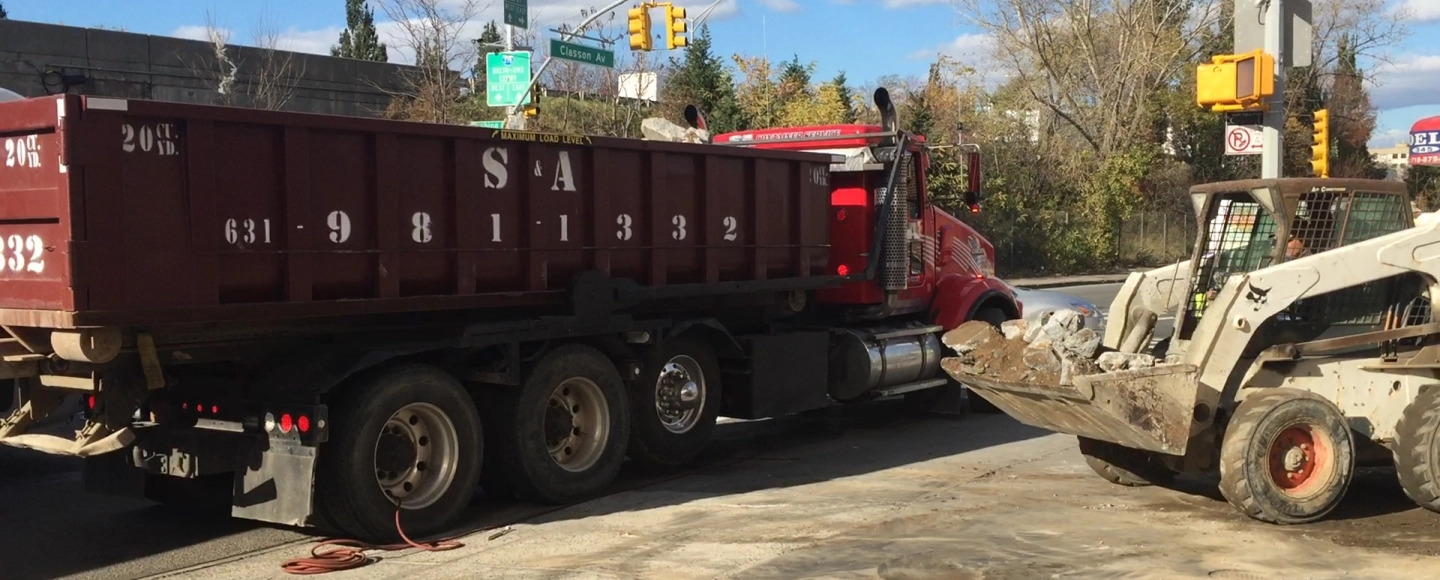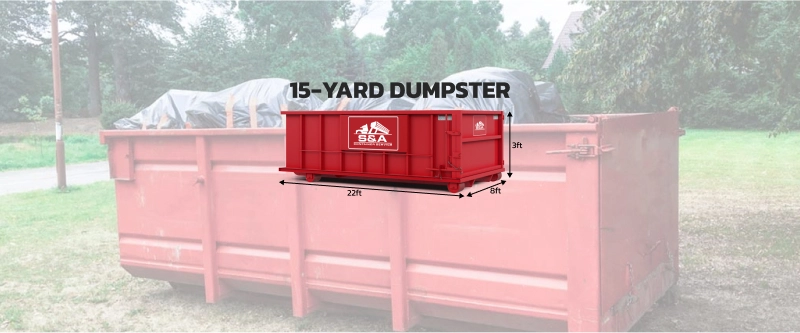You’ve just finished that bathroom remodel or cleared out the yard, and now you’re left with a pile of debris that’s hard to ignore. You might be thinking, “I’ve got a pickup truck—why not just haul it myself and save some money?” Before you head to the dump, it’s worth taking a closer look at the real costs of DIY hauling and whether it truly stacks up against the convenience and value of renting a dumpster.
Long Island’s disposal rules and transfer station fees can be tricky, and what looks like a money-saver at first glance often adds up fast—sometimes even faster than your project did! Let’s break it down.
What DIY Hauling Actually Involves
DIY hauling sounds simple: load up your truck, drive it to the nearest transfer station or town landfill, dump it, and you’re done. But here’s the catch: every load costs you in more ways than one. First, there are the dump fees, which are charged by the ton or based on volume pricing, and can add up quickly if you’ve heavy debris, such as concrete or roofing shingles. Even if you have debris that is on the lighter side, most transfer stations and local dumps have minimum fees that can be expensive if you have only a small amount of debris.
Then there’s your time. Factor in multiple trips through the always-busy LIE or Sunrise Highway traffic, plus time waiting in line to unload. That time adds up, especially if you’re paying a contractor or crew by the hour. Every minute spent driving back and forth is money out of your pocket.
And don’t forget the risk of picking up a flat tire. Local dumps and transfer stations often have nails, screws, bolts, and other debris scattered around—just waiting to ruin your day (and your tire).
The Hidden Costs of DIY Hauling
Sure, it might feel like you’re saving by avoiding a dumpster rental company, but let’s talk about the hidden costs. Besides landfill fees, there’s wear and tear on your vehicle. Hauling heavy loads beats up your truck’s suspension, brakes, and tires, and that means more maintenance costs down the line. And don’t forget fuel—those multiple trips can eat up a tank of gas before you know it.
Then there’s the risk of unexpected fees at the transfer station. Some items—such as hazardous materials (paint, chemicals, asbestos)—cannot be disposed of with regular debris and may require special handling, which can incur additional fees and involve time-consuming paperwork.
Recent articles:
- How to Budget for Your Next Dumpster Rental
- Budgeting for Construction Waste Disposal
- Tips for Your Next Office Cleanout
- Waste Management for Events – Best Practices
How Transfer Stations and Landfill Sites Work
If you’re thinking about DIY hauling, it’s essential to understand how transfer stations and landfill sites operate here on Long Island. Transfer stations, such as those in Yaphank, Bay Shore, Babylon, and Water Mill, serve as intermediate drop-off points where local haulers and the public can dispose of their waste. Basically, you drive in, weigh your load, pay the fee (often by the ton or by volume-based pricing), then dump your debris into designated areas for sorting and processing.
Here’s the catch: not everything can be dumped there. For example, hazardous materials such as paint, chemicals, or asbestos typically can’t be left at a regular transfer station and require special disposal. That’s where additional fees and paperwork can come into play.
From the transfer station, waste is then sorted—recyclables are separated, and non-recyclable items are consolidated and loaded onto larger trucks to head to the landfill or incineration facility. Some transfer stations also collect green waste (like yard debris) or construction and demolition debris separately, and each of those might have its own disposal costs or guidelines.
Landfills are typically located farther away and are often not accessible to the general public. They’re where the non-recyclable waste ultimately ends up, so you’re not likely to drive your pickup directly there unless you’re a licensed hauler.
Understanding how these places work—and what they accept—can save you a ton of headaches (and unexpected fees). It’s another reason why working with a local dumpster rental company can make life easier: they know the ins and outs of these facilities and can handle the logistics for you.

When DIY Hauling Makes Sense (and When It Doesn’t)
DIY hauling can be a good choice for small jobs that only require one load, such as using a small pickup truck with lightweight debris, like a yard cleanup or disposing of a few old boxes from the garage. If you’ve got a truck, a free afternoon, and a local transfer station nearby—like the Yaphank facility—that might be the way to go.
But for bigger jobs—like a kitchen remodel, roofing replacement, or that major basement cleanout—you’re likely looking at multiple trips, mounting hauling costs, and a whole lot of time lost. That’s when a dumpster rental company comes in handy, saving you hours on the road and keeping your project on schedule.
The Value of a Dumpster Rental Company
Renting a dumpster from a professional company takes all the stress out of the cleanup. Instead of making multiple trips to the dump, everything goes into one container right on your property—and we handle the hauling. It’s simple, efficient, and saves you time, money, and wear and tear on your vehicle. Plus, you avoid the hassle of navigating dump fees, long lines, and the risk of picking up a flat tire.
Local companies in Huntington, Patchogue, or Smithtown know the local disposal rules and can help you avoid surprise fees—plus they often handle the paperwork for permits if you need to place the dumpster on the street.
Get in touch with S&A Container Service here to plan your next dumpster rental.
TL;DR Summary
- DIY hauling can cost more than you think: Multiple trips mean increased fuel consumption, longer wait times, and greater vehicle wear.
- Landfill fees add up: Transfer stations on Long Island charge by the ton or volume—sometimes with hidden fees for certain materials.
- Hourly rates matter: Every hour you spend driving is time away from your project—and money out of your pocket.
- Hazardous materials complicate things: Some items need special disposal and can rack up additional fees.
- Dumpster rental companies simplify the process: One flat rate (plus possible additional fees) covers it all—saving time, money, and stress.



